Ford Puma vs Kia Niro – Differences & prices compared
Two cars, one duel: Ford Puma meets Kia Niro.
Which one wins in performance, efficiency and value for money? Find out now!
Costs and Efficiency:
When it comes to price and running costs, the biggest differences usually appear. This is often where you see which car fits your budget better in the long run.
Ford Puma has a somewhat advantage in terms of price – it starts at 24800 £, while the Kia Niro costs 29100 £. That’s a price difference of around 4363 £.
Fuel consumption also shows a difference: Kia Niro manages with 2.40 L and is therefore significantly more efficient than the Ford Puma with 5.40 L. The difference is about 3 L per 100 km.
As for range, the Ford Puma performs convincingly better – achieving up to 376 km, about 314 km more than the Kia Niro.
Engine and Performance:
Power, torque and acceleration say a lot about how a car feels on the road. This is where you see which model delivers more driving dynamics.
When it comes to engine power, the Kia Niro has a minimal edge – offering 180 HP compared to 168 HP. That’s roughly 12 HP more horsepower.
In acceleration from 0 to 100 km/h, the Ford Puma is clearly perceptible quicker – completing the sprint in 7.40 s, while the Kia Niro takes 9.90 s. That’s about 2.50 s faster.
In terms of top speed, the Ford Puma performs slightly better – reaching 210 km/h, while the Kia Niro tops out at 185 km/h. The difference is around 25 km/h.
There’s also a difference in torque: Ford Puma pulls minimal stronger with 290 Nm compared to 265 Nm. That’s about 25 Nm difference.
Space and Everyday Use:
Whether family car or daily driver – which one offers more room, flexibility and comfort?
Both vehicles offer seating for 5 people.
In curb weight, Ford Puma is to a small extent lighter – 1316 kg compared to 1474 kg. The difference is around 158 kg.
In terms of boot space, the Ford Puma offers a bit more room – 523 L compared to 451 L. That’s a difference of about 72 L.
In maximum load capacity, the Kia Niro performs a bit better – up to 1445 L, which is about 162 L more than the Ford Puma.
When it comes to payload, Ford Puma barely noticeable takes the win – 469 kg compared to 466 kg. That’s a difference of about 3 kg.
Who comes out on top?
Overall, the Ford Puma shows itself to be wins solidly and secures the title of DriveDuel Champion.
It convinces with the more balanced overall package and proves to be the more versatile choice for everyday use.
 @ Ford Motor Company / Ford Media Center
@ Ford Motor Company / Ford Media Center
Ford Puma
Ford Puma
The Ford Puma is a cheeky compact crossover that blends sporty styling with city-friendly practicality, giving drivers a surprisingly fun and composed ride. With clever storage tricks and a lively personality, it’s a smart pick for buyers who want enjoyment without fuss.
details @ Ford Motor Company / Ford Media Center
@ Ford Motor Company / Ford Media Center
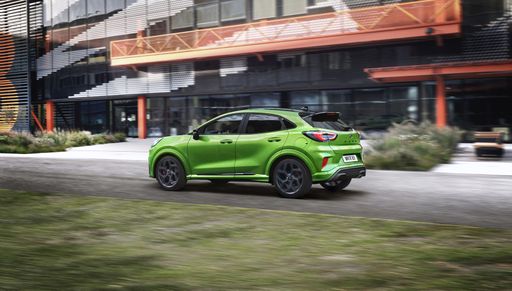 @ Ford Motor Company / Ford Media Center
@ Ford Motor Company / Ford Media Center
 @ Ford Motor Company / Ford Media Center
@ Ford Motor Company / Ford Media Center
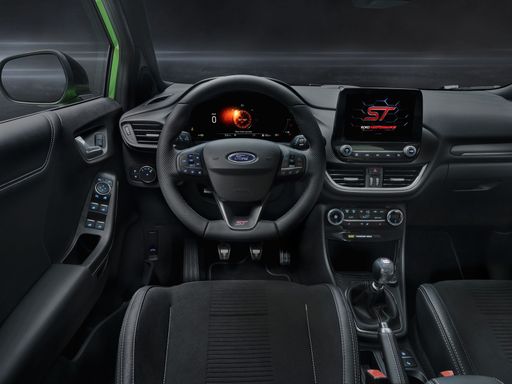 @ Ford Motor Company / Ford Media Center
@ Ford Motor Company / Ford Media Center
Kia Niro
The Kia Niro blends clever packaging and modern styling into a compact crossover that’s refreshingly sensible for daily life. It’s comfortable, economical and packed with user‑friendly tech, so if you want a fuss‑free family car with a touch of green credibility, the Niro is worth a test drive.
details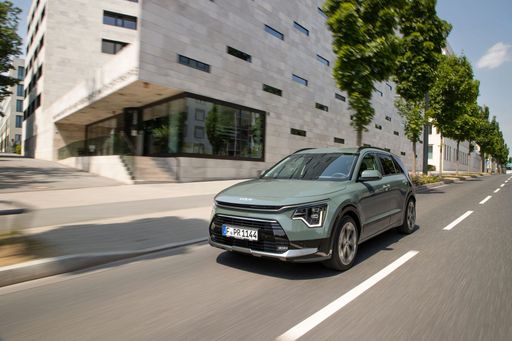 @ Kia Corporation
@ Kia Corporation
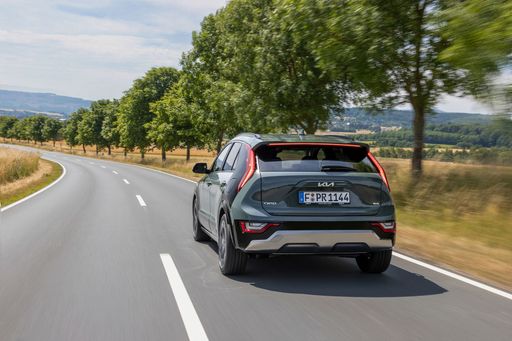 @ Kia Corporation
@ Kia Corporation
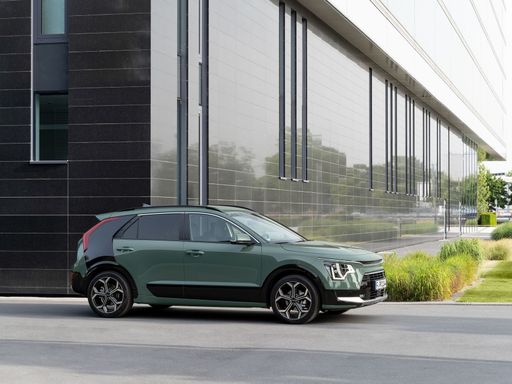 @ Kia Corporation
@ Kia Corporation
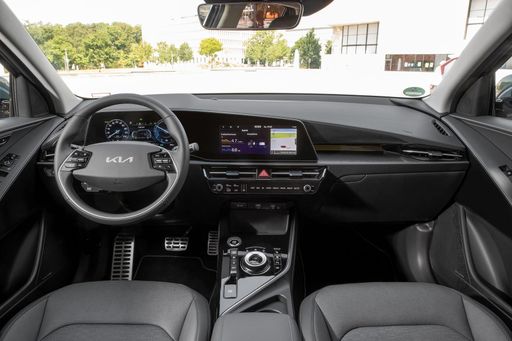 @ Kia Corporation
@ Kia Corporation
 @ Kia Corporation
@ Kia Corporation
 @ Ford Motor Company / Ford Media Center
@ Ford Motor Company / Ford Media Center
|
 @ Kia Corporation
@ Kia Corporation
|
|
|
|
Costs and Consumption |
|
|---|---|
|
Price
24800 - 36300 £
|
Price
29100 - 38600 £
|
|
Consumption L/100km
5.4 - 5.9 L
|
Consumption L/100km
2.4 - 4.9 L
|
|
Consumption kWh/100km
13.1 - 13.9 kWh
|
Consumption kWh/100km
-
|
|
Electric Range
361 - 376 km
|
Electric Range
57 - 62 km
|
|
Battery Capacity
43 kWh
|
Battery Capacity
1.3 - 11.1 kWh
|
|
co2
0 - 135 g/km
|
co2
53 - 111 g/km
|
|
Fuel tank capacity
42 L
|
Fuel tank capacity
37 - 42 L
|
Dimensions and Body |
|
|---|---|
|
Body Type
SUV
|
Body Type
SUV
|
|
Seats
5
|
Seats
5
|
|
Doors
5
|
Doors
5
|
|
Curb weight
1316 - 1563 kg
|
Curb weight
1474 - 1594 kg
|
|
Trunk capacity
456 - 523 L
|
Trunk capacity
348 - 451 L
|
|
Length
4186 - 4226 mm
|
Length
4420 mm
|
|
Width
1805 mm
|
Width
1825 mm
|
|
Height
1550 - 1555 mm
|
Height
1545 mm
|
|
Max trunk capacity
1216 - 1283 L
|
Max trunk capacity
1342 - 1445 L
|
|
Payload
367 - 469 kg
|
Payload
466 kg
|
Engine and Performance |
|
|---|---|
|
Engine Type
Electric, Petrol MHEV
|
Engine Type
Full Hybrid, Plugin Hybrid
|
|
Transmission
Automatic, Manuel
|
Transmission
Automatic
|
|
Transmission Detail
Reduction Gearbox, Manual Gearbox, Dual-Clutch Automatic
|
Transmission Detail
Dual-Clutch Automatic
|
|
Drive Type
Front-Wheel Drive
|
Drive Type
Front-Wheel Drive
|
|
Power HP
125 - 168 HP
|
Power HP
138 - 180 HP
|
|
Acceleration 0-100km/h
7.4 - 9.8 s
|
Acceleration 0-100km/h
9.9 - 11.4 s
|
|
Max Speed
160 - 210 km/h
|
Max Speed
170 - 185 km/h
|
|
Torque
170 - 290 Nm
|
Torque
265 Nm
|
|
Number of Cylinders
3
|
Number of Cylinders
4
|
|
Power kW
92 - 124 kW
|
Power kW
102 - 132 kW
|
|
Engine capacity
999 cm3
|
Engine capacity
1580 cm3
|
General |
|
|---|---|
|
Model Year
2025
|
Model Year
2025
|
|
CO2 Efficiency Class
A, D
|
CO2 Efficiency Class
C, B
|
|
Brand
Ford
|
Brand
Kia
|
Is the Ford Puma offered with different drivetrains?
The Ford Puma is offered with Front-Wheel Drive.
The prices and data displayed are estimates based on German list prices and may vary by country. This information is not legally binding.
